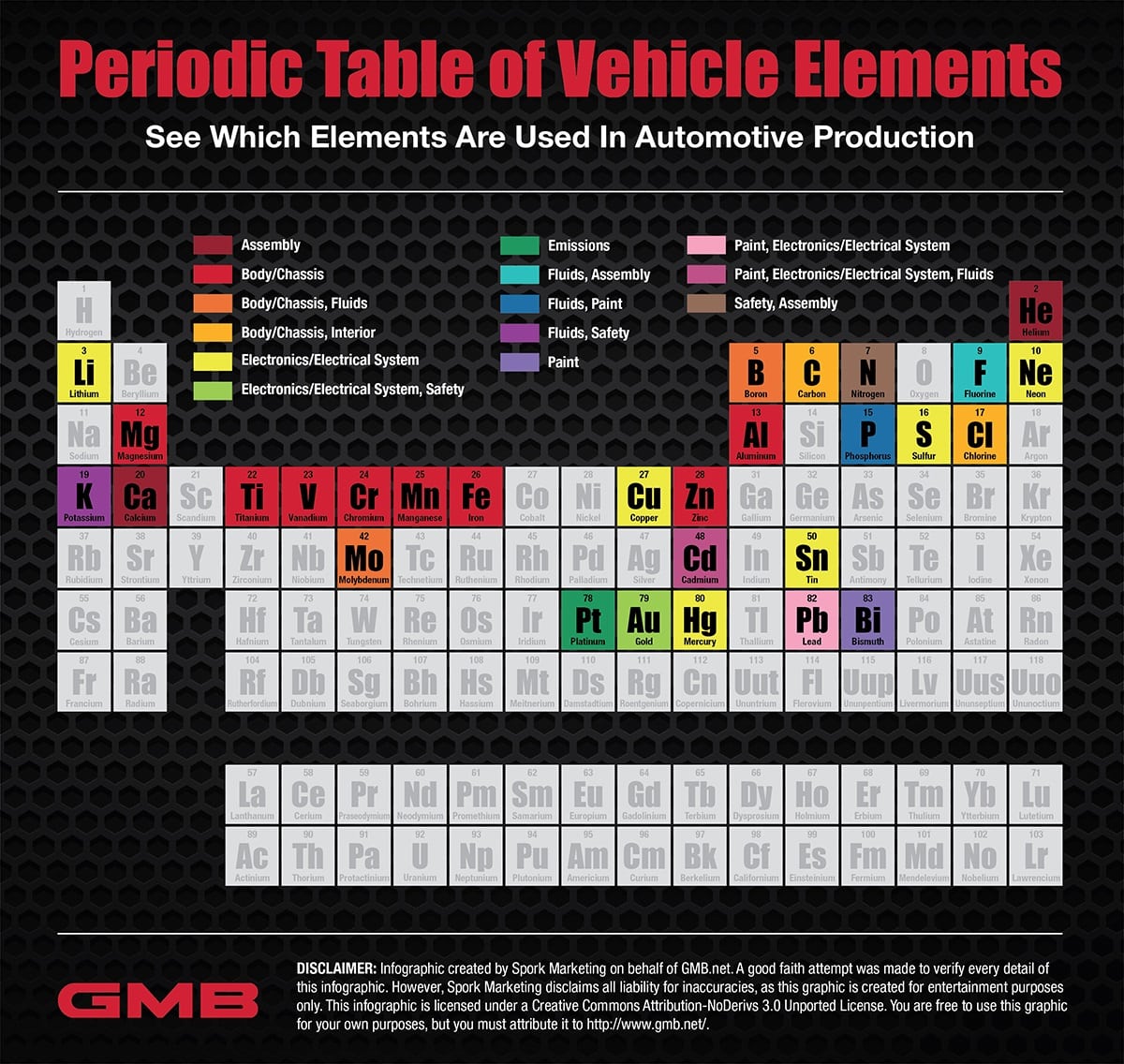Here’s something interesting. This periodic table has the elements used in automotive manufacture marked off in colors to denote where the element is used. An amazing number of elements are used, for example, to make paint or structural parts while others are almost entirely used just for one or two smaller items on a car.
The chart was commissioned by GMB North America, an auto parts manufacturer.
“Every new vehicle has thousands of parts, from individual nuts and bolts to plastic trim and body panels,” says Sarah Porter, Marketing Manager at GMB North America. “While a lot of these parts are made from the same groups of elements, there are some surprises. We thought it would be fun to show how various elements are used by the auto industry in a familiar format.”
Here are some of the highlighted elements and their uses in automotive manufacturing:
- Aluminum– Aluminum is used extensively in the modern automobile. The obvious uses are body panels and alloy wheels. However, it’s also used to reduce the weight of numerous components, from engine blocks and cylinder heads to control arms and battery cables.
- Bismuth– The pearl pigment of bismuth oxychloride was used in automobile paint for a short time, between 1998 and 2000. It went the way of lead and uranium, both once used in automobile paint. Nowadays, some free-cutting steel is being produced with bismuth, and that steel is used in engine parts.
- Calcium– Calcium carbide is an important mineral in the production of steel.
- Carbon– Carbon is used in countless ways in a modern automobile, with the most visible use being carbon fiber. Carbon fiber is used for everything from decoration to vehicle frames and body panels.
- Chlorine– Chlorine is used to make PVC, which is used for moldings, trim parts, and also as an underbody coating. It’s also used to make hydrochloric acid, which is used in a variety of industrial processes.
- Gold– Gold is often used in vital electrical system components, such as the circuitry that fires airbags.
- Helium– Many auto parts and assemblies are leak tested using helium. Additionally, helium is often used in controlled atmosphere brazing, a manufacturing process for many automotive components.
- Magnesium– Magnesium alloys are commonly used in subframes, rear-link arms, oil pans, hoods, trunks, and lift gates, often to reduce weight.
- Platinum– Platinum is a key component in catalytic converters because of its natural resistance to heat and corrosion. In the US, the auto industry uses more platinum than any other industry.







